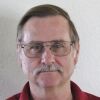I like the year-end column assignment. I can write anything I want about any topic without any restrictions...as long as I limit the use of four-letter words. However, I need to mention a few of those here such as loss, lack, less; all of which describe the decreasing EMS resources in rural and frontier areas as volunteers are aging and fewer young people are interested in taking their place.
At the same time those same four-letter words can be used to describe rural and frontier health care resources in general. In some manner we need to figure out how to tie our EMS resources to the rest of our medical assets to maintain adequate out-of-hospital health care and add to the available general medical care.
Community paramedicine is not a new idea lately the concept appears to be gaining momentum in our country. That is, in the lower 48 states of our country. Alaska has been ahead of the game since the 1950s when the Indian Health Service started community health aide programs to serve isolated Alaska villages.
The concept was initially formulated in 1956 by Dr. Walter Johnson, an Indian Health Service physician in Bethel, Alaska. He thought it might be a good idea to train village medical aides; he was certainly right on that one. The Alaska Community Health Aide/Practitioner Program is alive and well and providing community health care in rural and frontier areas as part of the Alaska Native Health Consortium. The training program is tiered to develop providers at increasing levels of capability. These providers are frequently the only day-to-day health care resource for many Alaska communities.
The military has their own version of the community medic stretching way back to World War II when they figured out that better hygiene and prevention of infectious diseases put more troops on the firing line than in the sick call line. Actually, some historians cite this attention to the health of the community of U.S. soldiers as the key to our military success during those times.
And the trend has continued. During my year long training as a military medic almost 40 years ago, we learned preventive medicine, infectious diseases and health maintenance along with emergency care. We even learned the basics of veterinary medicine due to the importance of livestock in foreign communities where we might be deployed. In those environments human health is often tied closely to the health of domesticated animals.
One of the favorite stories told during my training involved one of the past graduates who found himself in an isolated village in a country where elephants were highly valued work animals. He had been doing routine ‘clinics’ for the villagers when he was asked to check out an elephant that was experiencing massive diarrhea and would likely die if this continued.
I don’t know if he was able to determine the degree of elephant dehydration, but he somehow obtained a large supply of kaopectate, probably through the extensive military barter system in practice during that time. After a couple of gallons of anti-diarrhea juice the flow slowed and the animal survived. Needless to say the villagers were very impressed and even more cooperative in their support of the local military mission (whatever it was).
Community paramedic programs have existed for many years in many countries. Some are officially recognized programs and some developed unofficially as they evolved to meet the needs of a community with significant health care challenges. Although these programs tend to grow in countries with large rural and frontier lands such as Australia and Canada, more recent times have seen successful community paramedic programs developing in municipal environments where they amplify the available medical care in the urban community they serve.
Common sense says ‘good idea’, so why don’t we see a sustained effort to develop more community paramedic practice programs? There appears to be two major obstacles. The largest is the lack of an avenue to pay for services provided. Although attempts to correct this have been mounted, no national solution has yet been obtained.
The second obstacle is acceptance by the local medical community, be that other medical providers or nursing colleagues; and this appears to vary from location to location. The first obstacle has to be breeched at the national level, while the second can be overcome on the local level through education and cooperation if the primary focus is on improving patient care. This is evident in the past and present community paramedic programs originating in the U.S.
With decreasing health care dollars and increasing need, community paramedicine can be a cost-effective avenue to increase available local medical resources and should be embraced. It just makes sense.












